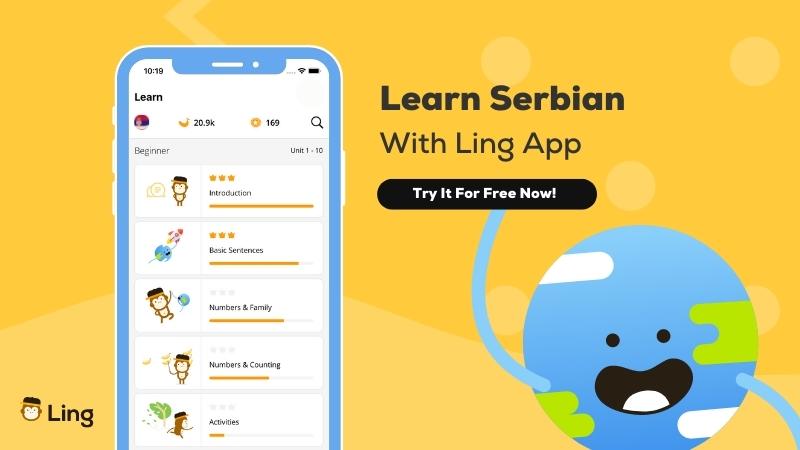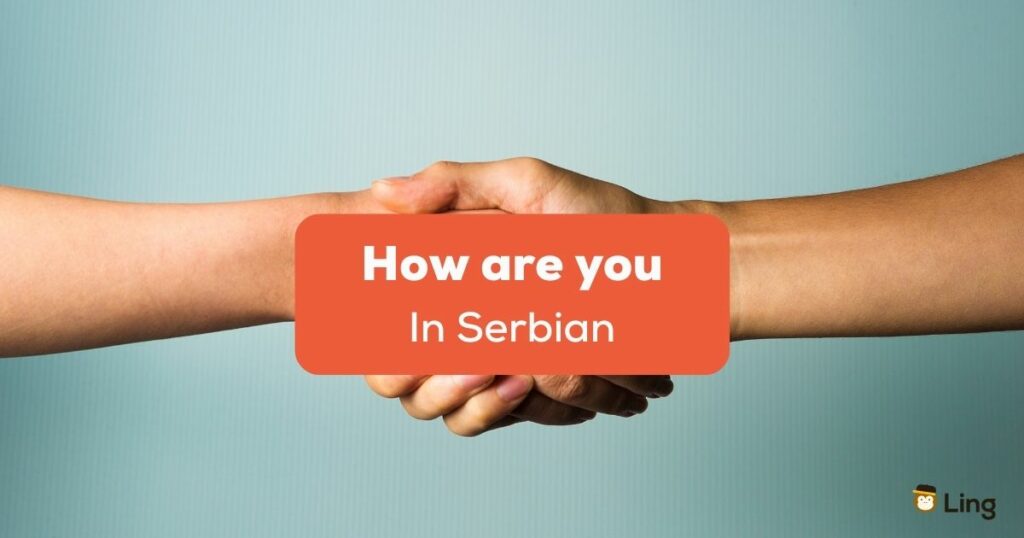Are you taking your first steps into learning Serbian to connect with your Serbian friends? In this article, I will teach you all the best ways to approach your friends and ask, “how are you” in Serbian. This is actually one of the first searches newbies do when they start learning a new language, as it is one of the most useful phrases you can learn. So without further ado, let’s get started!
How would you usually approach your friends in English? You’d drop a “how are you,” right? In Serbian, it’s precisely the same! You can use this simple question with your friends and even with strangers with whom you want to converse with. The best part is that it’s easy to remember, too! You don’t have to worry about conjugating it or figuring out what tense you need. Just say, “kako ste,” and you’re good! Let’s review this topic in the sections below to understand this better.
Why Should You Learn Serbian?
This is all very beautiful, but why should you learn a language as difficult as Serbian? You see, Serbian is the official language not only in Serbia but also in Bosnia and Herzegovina, Montenegro, and Kosovo. In total, there are 12 million native speakers, and much more are learning to become fluent in it. By learning this language, you expand your communication possibilities by 12 million more people!
In a more general way, learning a new language brings several benefits to you personally: it can boost problem-solving, critical-thinking, and listening skills, as well as help you improve your concentration and ability to multitask when you change between two languages constantly. As you can see, there is no downside to investing in a new language, so why not Serbian? Let’s start with an easy lesson and dive in on how you say “how are you” in Serbian below!

How Are You In Serbian
There are several ways you can ask someone how they are, some more formal than others. The most standard way is Како сте? (Kako ste?) that means “how are you?” in Serbian. If you only want one way to say it, stick with this one. It is more formal, but it is appropriate to use with friends or strangers. You can even use it with your boss or older adults that require a bit more formalism and respect.
Of course, like in the English language, other ways are a bit more relaxed that you can use with your family and friends. For example, you can use како си? (Kako si?) that is very similar to the previous variation but has an intrinsic informal value to it.
If you’re comfortable with the person you’re talking to, then you can use the even more informal way шта има? (Šta ima?) that translates to “What’s up?” in English.
Common Serbian Responses
Now that we know how to ask how somebody is, maybe it is worth knowing how to respond if somebody asks how you’re doing. There are many ways you can answer, so look at the Serbian phrases below and choose the one you like the most!
If you want to show your Serbian knowledge, then after this, you can ask back to people how they are doing. If the person who asked you used the informal question, you could say А ти? (A ti?), a more casual way to ask, “And you?”. On the other hand, if, for example, your boss asks you Како сте? (Kako ste?), you should answer Добро (Dobro) and then ask back A Ви? (A vi?), keeping the formal tone.

Conversation Examples
Let’s use these terms we learned and practice them with real-life conversations. These are the most useful Serbian phrases you should consider mastering.
Example 1 (informal)
- Person 1: Како сте? (Kako si? – How are you?)
- Person 2: добро сам, хвала. И ви? (Dobro sam, hvala. A ti? – I’m good, thank you. And you?)
- Person 1: Добро сам (Dobro sam – I’m good)
Example 2: (formal)
- Person 1: Kako ste? (How are you?)
- Person 2: Веома добро хвала вам! И ви? (Veoma dobro hvala vam! I vi? – Very good, thank you! And you?
- Person 1: Добро сам (Dobro sam – I’m good)
Example 3:
- Person 1: Здраво! Да ли говориш српски? (Zdravo! Da li govoriš srpski? – Hello! Do you speak Serbian?)
- Person 2: Здраво! Да, знам! Драго ми је да смо се упознали! (Zdravo! Da, znam! Drago mi je da smo se upoznali! – Hi! Yes I do! Nice to meet you!)
- Person 1: Хвала вам! Драго ми је да смо се упознали. (Hvala vam! Drago mi je da smo se upoznali. – Thank you! Nice to meet you too.)
Want To Invest Further In Your Serbian?

Do you want to continue investing in your Serbian and be able to have much richer and full conversations in this beautiful language? Or do you want to learn any other language from around the world? Then you can try Ling App, a language learning app that makes learning a new language fun.
This application fits perfectly on your phone so you can learn new languages everywhere. Imagine this: You have a flight to Serbia next week to meet some friends, and you want to have some words in your vocabulary before going: join us at Ling and start learning Serbian in as little as 15 minutes per day.
You’re not sure if this is the right step for you? Don’t worry. Explore our blog a bit more and learn some more topics about Serbian before making your decision. I’m 100% sure you’ll want to join us and learn more about Serbian in no time!
I’ll leave the download link for Ling App for both App Store and Google Play so that you can come back here and start using Ling App for your Serbian language learning journey!





















